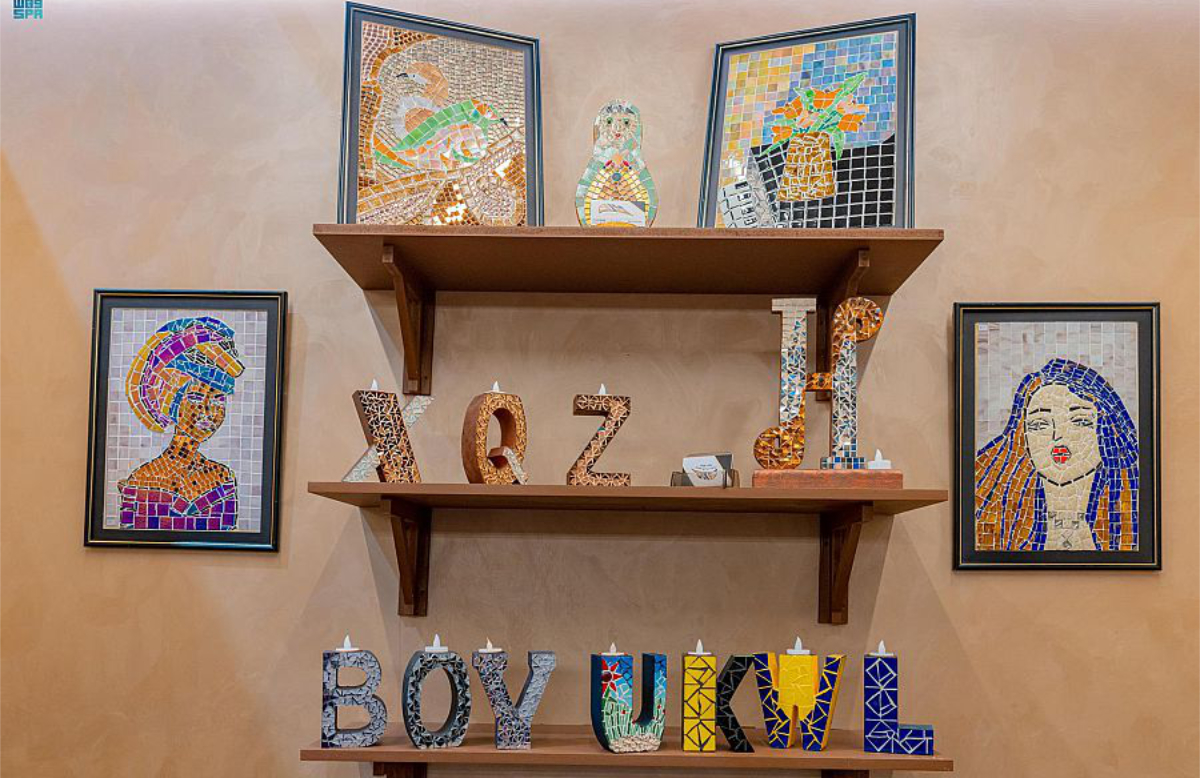RIYADH: Among the many treats on offer to visitors to the Saudi International Handicrafts Week at the Riyadh Front is a display of spectacular mosaics by local artist Salwa Al-Amoudi.
Al-Amoudi uses pebbles, shells, colored glass, porcelain and ceramics to create contemporary mosaic panels that can be used to decorate the walls and floors of homes and public buildings.
Such is the intricacy of the designs that they often take up to two months to produce.

Al-Amoudi uses pebbles, shells, glass and ceramics to create contemporary mosaic panels that can be used to decorate the walls and floors. (SPA)
Mosaics are among the world’s oldest visual arts and have been used by many ancient civilizations. They were commonly used to decorate the walls of mosques and palaces during the Umayyad, Abbasid and Fatimid periods in Egypt and Andalusia.
Titled “Banan,” meaning fingertips in Arabic, the Saudi International Handicrafts Week, organized by the Heritage Authority, aims to highlight the community-building aspect of crafts like woodworking, blacksmithing, weaving and embroidery.
BACKGROUND
Mosaics are among the world’s oldest visual arts and have been used by many ancient civilizations. They were commonly used to decorate the walls of mosques and palaces during the Umayyad, Abbasid and Fatimid periods in Egypt and Andalusia.
Saudi Deputy Minister of Culture Hamed Fayez said earlier: “There’s no doubt that handicrafts play an important part in economic and cultural projects and are a factor for creating job and investment opportunities, in addition to their role in preserving cultural heritage and strengthening national identity.”
The event, which ends on Monday, also invites craft enthusiasts to engage in hands-on workshops and provides a platform for the sharing and celebration of centuries of collective stories and legacies from around the world.















